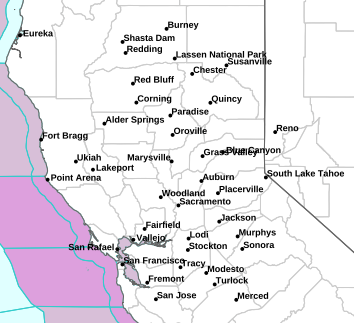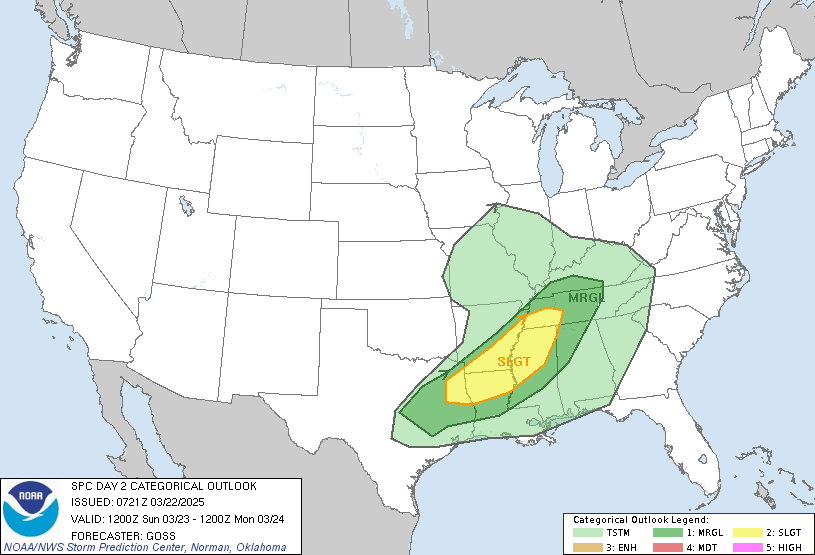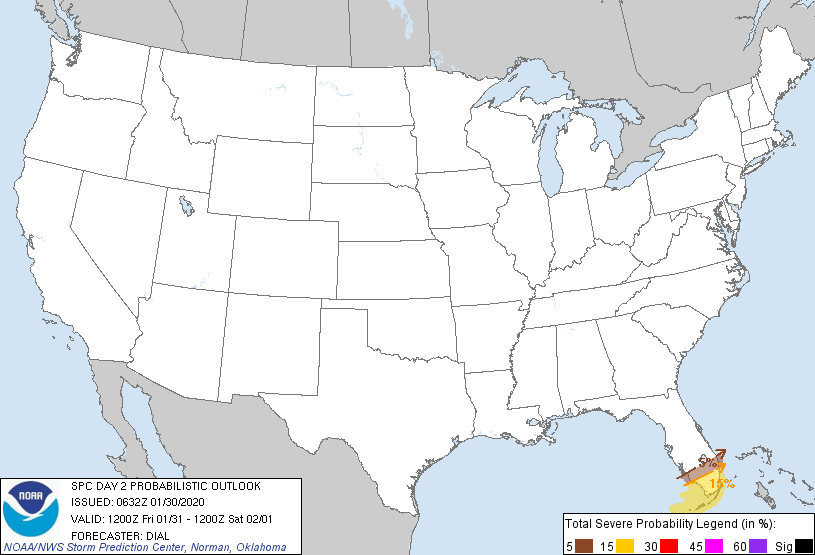SPC AC 270557
Day 2 Convective Outlook
NWS Storm Prediction Center Norman OK
1257 AM CDT Sat Apr 27 2024
Valid 281200Z - 291200Z
...THERE IS A SLIGHT RISK OF SEVERE THUNDERSTORMS FROM EAST TX
NORTHWARD INTO THE UPPER MS VALLEY...
...SUMMARY...
Strong to potentially severe thunderstorms will be possible Sunday
from northeast Texas into parts of the upper Mississippi Valley.
Damaging winds, hail, and a few tornadoes will all be possible.
...East TX into the upper MS Valley...
A broad region of at least some severe potential is still expected
on Sunday from northeast TX into parts of the upper MS Valley.
Within this larger region, it appears the greatest relative threat
may develop from northeast TX/southeast OK into western AR/northwest
LA. However, with very extensive convection expected upstream on
D1/Saturday, uncertainty is too high to increase probabilities at
this time.
A negatively tilted shortwave trough and attendant surface low are
forecast to move from the central Plains toward the upper MS Valley
on Sunday. Widespread convection will likely be ongoing at the start
of the period from Texas toward the lower MO Valley, and potentially
farther north into parts of the upper Midwest. Some lingering severe
threat could accompany this morning convection, especially toward
the ArkLaTex region where somewhat more favorable
moisture/instability will be in place.
There is some potential for morning convection to remain somewhat
organized and continue eastward with a severe threat, but the
greater concern will be with redevelopment in the wake of morning
convection, with rich low-level moisture expected to remain in place
along/ahead of the dryline, which will likely extend from eastern
NE/KS into central OK/TX by late afternoon.
One area of potential redevelopment will be immediately ahead of the
ejecting shortwave trough from eastern KS/NE into western MO and
southern IA, where a few stronger cells/clusters could pose a threat
of hail, isolated damaging gusts, and a tornado or two. The
magnitude of this threat will be strongly dependent on the extent of
diurnal destabilization in the wake of morning convection.
Potentially more vigorous redevelopment will be possible along the
western/southern periphery of remnant early convection near the
ArkLaTex region, where rich moisture and favorable wind profiles
will support organized convection, if sufficient
recovery/destabilization can occur. Supercells will be possible,
though there may be a tendency toward cluster or linear mode as
storm coverage increases. Damaging gusts, hail and a few tornadoes
will be possible within this regime, though magnitude and favored
placement of the threat remain uncertain at this time.
...Northeast OH into PA...
A few stronger storms will be possible Sunday afternoon from
northeast OH into PA, within a weakly forced northwest-flow regime.
At this time, instability appears too weak to support an organized
severe threat, though small hail and gusty winds will be possible
with the strongest storms.
..Dean.. 04/27/2024
CLICK TO GET WUUS02 PTSDY2 PRODUCT
NOTE: THE NEXT DAY 2 OUTLOOK IS SCHEDULED BY 1730Z
|






 Air Quality
Air Quality










